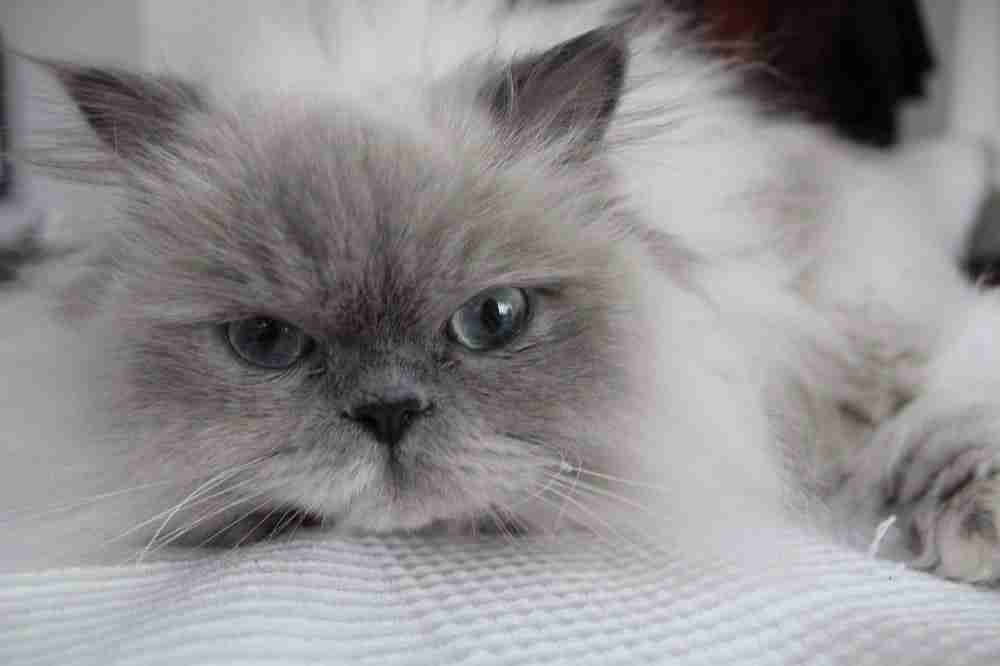Himalayan cats or ‘Himmies’ are basically a hybrid of Siamese and Persian cats. These beautiful cats are blessed with a silky, long coat that resembles Persian cats. Read on to learn more about this handsome and smart breed…
They have bright blue eyes and pointed coloring on their coats, just like the Siamese felines. Himalayan cats are naturally stocky with a deep, wide chest and round abdomen. These felines are medium/large in size and very calm in nature.
Himmies are widely known as the ‘gentle giants’ because of their sweet and temperate personalities despite their size. They absolutely crave the attention and affection of their owners and are usually very playful in nature. But be warned, they’re high-maintenance cats and need daily care to thrive!
Main Characteristics Of The Breed
We’ve divided the characteristics of Himalayan cats into two categories, one is the basic characteristics regarding their overall nature, and the other is their physical attributes. Time to discover more about them!
Basic Characteristics
As mentioned before, Himmies have a very high affection level. They require the affection of their owners every now and then, so if you’re a very busy person, having one of these felines as a pet isn’t a good idea.
They’re very pet-friendly, so you can easily keep Himmies alongside other pets- they’ll be happy to have a playful friend! If you have kids at your place and are a bit concerned about pets – then Himmies can be a great option as they’re kid-friendly, and your kids will actually have a great time playing with them.
Himalayan Cats don’t require a lot of exercise, mostly because of their low energy level. They get tired a tad bit too easily, which is why it needs your constant attention.
These felines have moderate to high intelligence levels and but don’t vocalize a lot like some of their Siamese relatives. So the chances of you waking up to a constant meowing in the middle of the night are quite low. The main issue with these cats is that they shed a lot so they need regular grooming and are likely to leave your home hairy! Not good if you suffer from cat allergies!
Physical Attributes
These cats are relatively bigger than other cats and they have a sturdy physique. Unlike both Siamese and Persians, they have a heavier bone structure.
Body
Himmies have a well-rounded, firm, and cobby mid-section. They have a deep chest and level back. Perhaps the most unique feature about their body is the well-rounded abdomen and heavy, sturdy ribs. They have a muscular and well-developed physique as well.
Head
These cats have round and smoothly domed heads. They have inherited the flatter face of their Persian ancestors. Their jaws are powerful and broad with near-perfect tooth occlusions. They have prominent cheeks and happy expressions all over their face. Their chin is strong, well developed, and fits well into their faces.
These felines have open nostrils and a broad, snub nose. A unique feature about their head and face is that the nose, chin, and forehead are all in a straight line. Himmies have well-muscled, short, and thick necks.
Ears
These cats have round-tipped and small ears. They fit well with the head and are set quite wide apart.
Eyes
One of the most important features of a feline is its eyes. These cats have round, large and full eyes that are set far apart and level with their face to give a happy expression overall. They naturally have deep blue eyes, but sometimes the shades of blue might differ as you may see Himmies with medium or light blue eyes.
Legs
As we said earlier, Himalayan cats have strong, sturdy, and well-developed bones. The forelegs seem short from a front view and give a muscular appearance. From a rearview, the legs seem straight. These cats have round and large feet.
Tail
Unlike the Persian Cats, the Himalayans don’t have large, bulgy tails. Instead, they have short, straight tails that are proportionate to their body length.
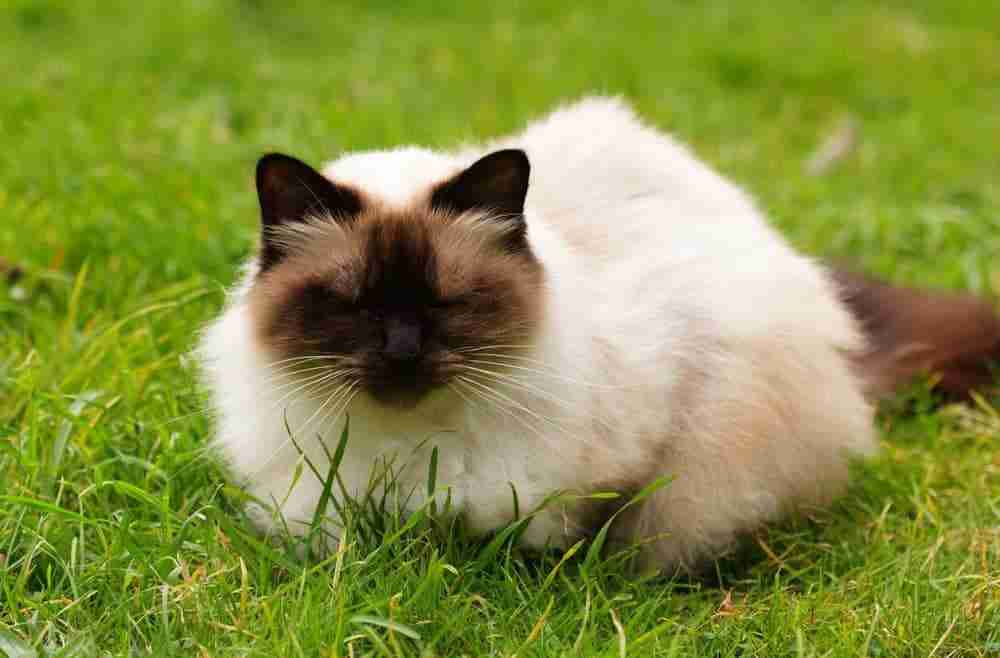
Coat
These fluffy felines are blessed with long and dense undercoats. While it looks stunning, the heavy coat is also the reason for their regular shedding. The amount or density of their coat varies in different seasons.
Breed History
It all started back in 1931. Two cat enthusiasts from Harvard University, Dr. Clyde Keeler and Virginia Cobb, decided to do an experimental breeding program. The target was simple — to create a cross-breed or a hybrid cat that had the characteristics of both Persian and Siamese cats.
They wanted to research and analyze the genetic traits of cats, so they started the experimentation. After a few unsuccessful attempts, they were finally successful in producing cats with Siamese colorpoints and Persian longhairs. They decided to name it ‘Himalayan Cats’ or Himmies.
The first-ever Himalayan Cat was named ‘Newton’s Debutante’, and after researching and observing the cat, the two scientists came to a conclusion that both the colorpoint and longhaired gene are recessive.
Neither Keeler or Cobb was planning to start a whole new breed, so they stopped experimenting once they got the result. After the Second World War, the interest in a Persian/Siamese cross-breed sort of died down.
However, back in 1950, Marguerita Goforth, an American citizen, found a longhaired cat with colorpoints, and she immediately decided to use the cat for a breeding program. One thing led to another, and she ended up successfully breeding a whole bunch of them — thus, the Himalayan Cats were reborn. The breed was then recognized in 1957 by the CFA.
Since then, the breed has become one of the most beloved types of cats throughout the world. They’ve had many different names too, like in the UK, they were called ‘Long Haired Colourpoint’.
As of now, these felines are called Himmies, Colorpoint Persians, Himalayan Persians, etc. Very recently, they’ve been recognized by TICA and CFA as a Persian breed, but many other organizations still consider them as an independent breed.
What Is The Personality Of A Himalayan Cat?
One of the reasons why people absolutely love Himmies is that they have certain traits of kittens that make them absolutely adorable.
One moment she’ll be sleeping like there’s no tomorrow, and the next moment you’ll see it bursting through your room, rolling around and purring for your affection. These are placid cats who need constant adoration and affection from you.
A Himalayan cat will sleep with you in your bed, sit on your hand or lap, and will stretch right next to you. She’ll most likely be super-friendly will everyone and should be sweet-tempered.
Himmies are considered as one of the best indoor cats, mostly because they’re calm, gentle, and quite playful. Just get a kitty toy and start playing fetch with it — you’ll understand that in no time!
Himmies are naturally dependant upon their owners for everything, and they don’t possess any wild or harmful traits. They’re devoted to their humans and crave love and attention all the time.
While they have similar activity levels to Persian Cats, they are much more gentle. They’re nowhere near as vocal as the Siamese Cats either.
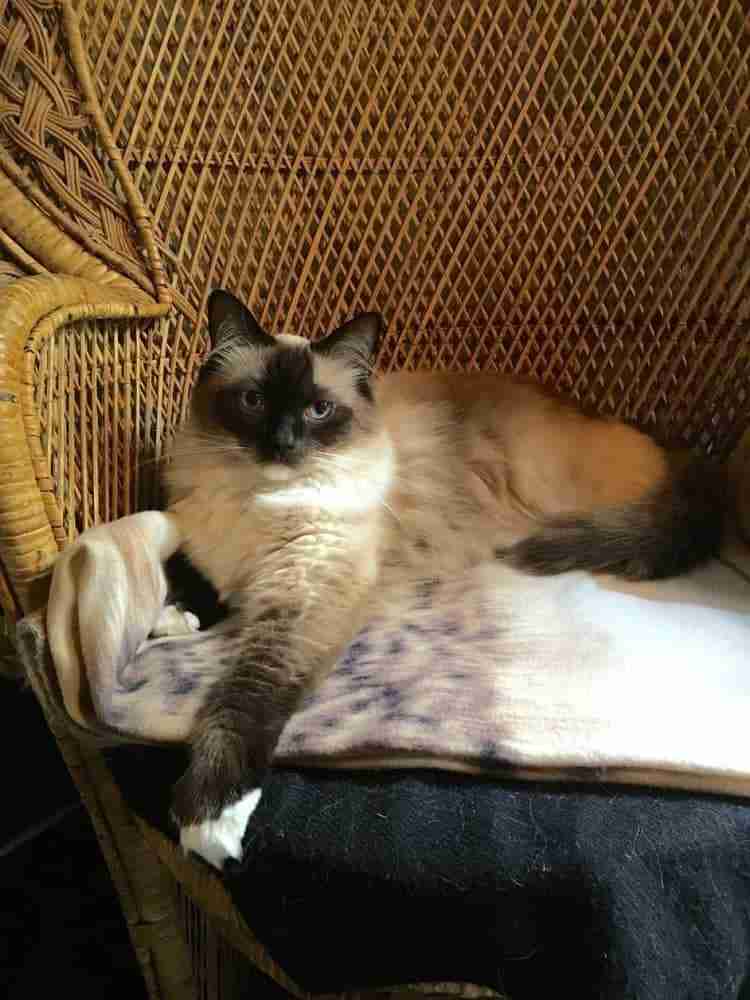
Size
These cats are considered large/medium in size compared with other cat breeds. As we said earlier, the round abdomen and wide chest make them look quite sturdy and muscular.
These cats weigh around 7-12 pounds in general. The male Himmies are relatively heavier and can weigh even more than 12 pounds in some cases. Even though many felines of this breed are medium in height, the heavy bones and mass of fur make them look quite massive.
Colors
Most of the body fur of a Himalayan is either cream or white, just like their siamese predecessors. However, the main contrast in color comes on the points on its coat, another trait inherited from Siamese Cats.
The colorpoints on its coat usually come in many different colors like slate grey , Blue, Chocolate, Flame Red, Seal Brown, Black, etc. These color points can also come in different patterns like Lynx, Tabby, or tortoise-shell!
Exercise Requirements
These cats have inherited the Persian cat’s energy levels and tend to prefer not to do a lot of exercise. They have low stamina, but that doesn’t mean they sleep all day. They can have periods where they are quite playful and need to be entertained every now and then.
You should provide them with cat toys and spend some time playing with them every day. Their playful nature means even a small ball of paper is enough to keep them happy and entertained for many hours.
Diet and Nutrition
Himalayans can be susceptible to hairballs — so it’s a good idea to feed your himmie specific kinds of food that will reduce hairballs.
Another issue these low activity cats they are prone to is feline obesity, overfeeding your cat can eventually be a fatal problem for your beloved Himmie. This is why you should be careful about feeding them and resist free feeding. If you notice signs of excessive weight in your cat get them on a diet before health issues arise.
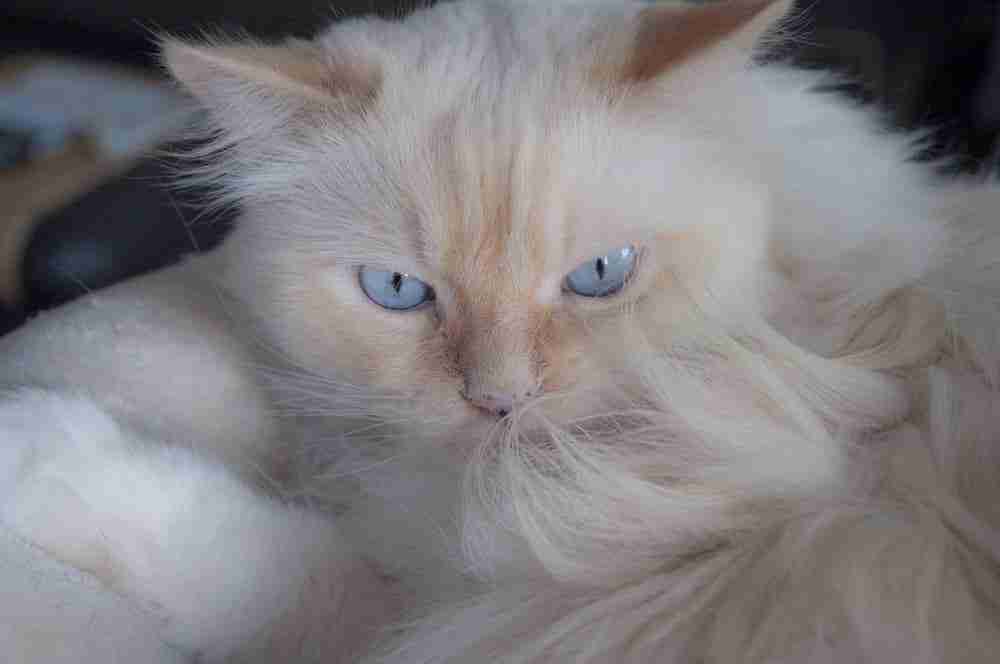
Do Himalayan Cats Have Health Problems?
There are some common health problems a Himalayan cat faces throughout its life. Some of them are gene-based, while some of them are based on its environment. They can suffer from kidney issues, respiratory problems, and ringworm.
Polycystic Kidney Disease
Polycystic kidney disease or PKD occurs when there are multiple cysts visible on the cat’s kidneys.
This isn’t a life-threatening disease if taken care of immediately, but if left untreated, it might result in more cysts and bacterial infections. It’s important to take your cat to the vet for monthly checkups if you want to save it from such a disease.
Respiratory issues
The problem with flat-faced cats is that the shape of their face makes them susceptible to different respiratory issues like swallowing, difficulty breathing, etc. There’s no certain cure for it, but if you feel like these issues are hampering your cat’s daily activities, you should consult a vet.
Ringworm
Another common problem for cats with thick coats is that they’re prone to developing ringworms. It’s quite tough to groom the long coats of Himmies, and hence ringworms can easily sneak in and weaken your precious cat.
To prevent this, you need to check the cat’s skin every day for scaly or red spots. If you find any — take your cat to the vet immediately!
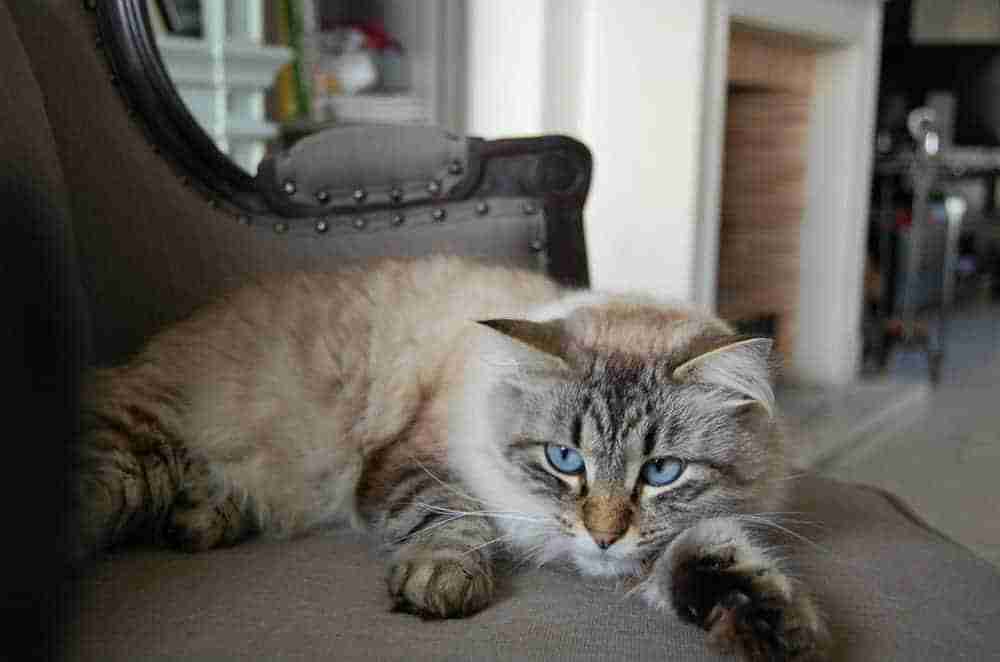
How Much Do Himalayan Cats Cost?
Himalayan Cats fall under the ‘expensive’ category of cats considering their price and cost of maintenance. A full-grown Himmie should cost you from $1000 to 2500 USD. You can definitely get them for a bit more or less, depending on the seller, but this is the usual price for grown cats.
If you’re considering taking a kitten as a pet, then depending on the bloodline and color of the coat, the prices range from $800-1500 in general.
However, finding a perfect Himalayan kittie isn’t the easiest thing in the world. For this particular reason, reputed breeders are a good source for purchasing Himmie kittens.
The issue with well-reputed breeders is that they’ll cost you relatively more. For example, a perfect Himalayan Cat with amazing color points and full certification may cost you around $2000-3500 USD.
Final Thoughts
So this was our take on the Himalayan and everything about it. These are majestic cats with a calm and social nature and will definitely be a very interesting addition to your family.
